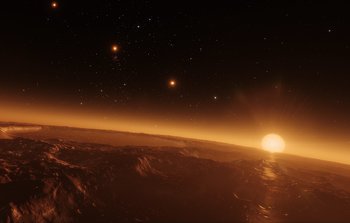The NASA/ESA Hubble Space Telescope has observed for the first time the source of a gravitational wave, created by the merger of two neutron stars. This merger created a kilonova — an object predicted by theory decades ago — that ejects heavy elements such as gold and platinum into space. This event also provides the strongest evidence yet that short duration gamma-ray bursts are caused by mergers of neutron stars. This discovery is the first glimpse of multi-messenger astronomy, bringing together both gravitational waves and electromagnetic radiation.
The release, images and videos are available on:
http://www.spacetelescope.org/news/heic1717/
Kind regards,
ESA/Hubble Information Centre
The ESO Education and Public Outreach Department
16 October 2017

|
16 October 2017: For the first time, Hubble has observed the source of gravitational waves: the merging of two neutron stars. This merger created a visible counterpart known as a kilonova — an object ...
|
| Read more |

|
11 October 2017: The atmosphere of an exoplanet can reveal a wealth of information, such as the planet’s temperature, its air pressure, and whether it is suitable for life. However, studying exoplanet ...
|
| Read more |
|
|
|
|